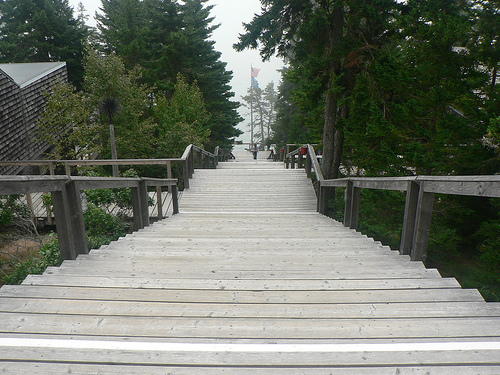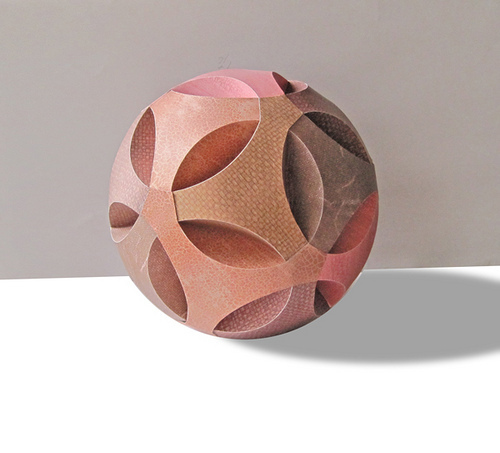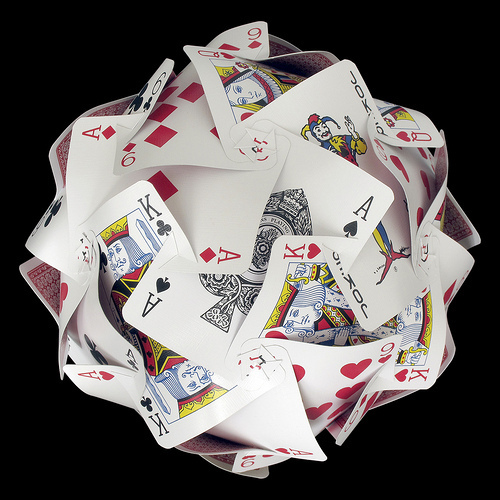Helen Hiebert's Blog, page 72
February 11, 2013
Hello from Codex!
This is just a quick hello from the Bay Area where I’m attending the Codex International Book Fair. I arrived a day early and had a wonderful time walking up to Mt. Davidson near my friend’s home, exploring Chinatown and attending an Indian festival.

View of the SF skyline from Mt. Davidson
The book fair today was amazing! I saw so many old friends and collectors and met many new ones as well. Thank you to those of you who came by and introduced yourselves! I ran into so many people from Portland, that I almost forgot that I don’t live there anymore.
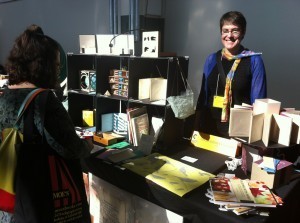
At my SUNNY Codex table
One treat was meeting Chris Palmer, paper folder extraordinaire, whose work I featured in Paper Illuminated and Playing With Paper.
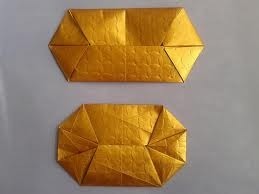
Chris Palmers’ folded paper
Chris had something like this sticking out of his shirt pocket, so of course I asked him what it was. I’m sorry i couldn’t take a video of him opening the ‘envelope’ and extracting the love letter that was inside (a uniquely folded piece of paper). He gently tugged on two corners of the letter, which completely unfolded the sheet and revealed a series of folds. Next he gently released the paper and it refolded itself into a flower form. Wow!
I hardly had a chance to leave my table and look at the other 175 booths, but I did see people walking by with papers they had purchased from Cave Paper, Hark! Handmade Paper and La Papeterie St. Armand.
The day wound down with a lovely dinner at The Greens restaurant in SF with my childhood friend who lives in the Bay Area now.
More soon!
February 5, 2013
Codex Book Fair
I’m off to the Codex Book Fair on Friday… will any of you be there? I’ll be in Booth 167, and I’m looking forward to it! For those of you who don’t know about it, this is the 3rd biennial event, where “the most distinguished book artists and artisans, private presses, and fine art publishers will be exhibiting their art and craft”. It takes place at the Craneway Pavillion in Richmond, CA and starts on Sunday.
I’m skipping town on Friday to visit a friend in SF prior to the fair and will be staying a couple of days afterwards with a childhood friend in Palo Alto. And, lucky me! Daria Wilber (who interned in my studio last month) will be helping me at the fair.
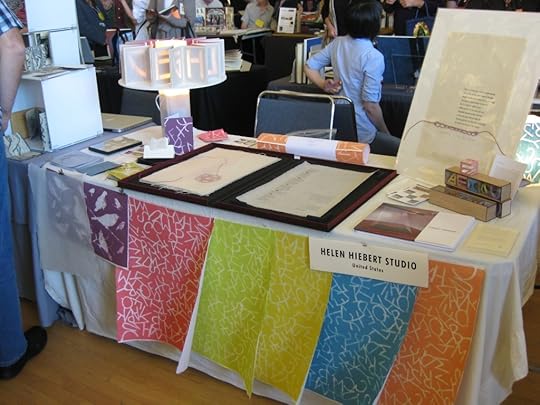
My table at Codex 2011
As you can imagine, I’ve been busy getting ready, packing books and broadsides which have been around for awhile:

String Theory, a suite of 6 string drawings in abaca

Alpha, Beta, … a light-activated book with a flexible hinge
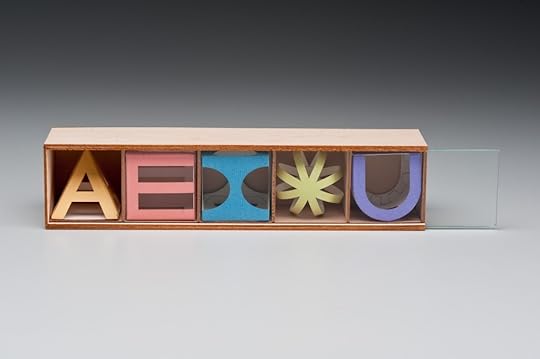
Sound Blocks, a collection of paper engineered vowels

The Way It Is broadside, featuring William Stafford’s poetry
And some which are new and haven’t been to Codex before:

Cosmology, featuring a lovely poem by Carl Adamshick

The Pop-Up Hand Shadow Book, with poems by Nora Robertson
And I’m putting the finishing touches on a new book and broadside (no professional photos yet).

Detail of The Big Bang broadside
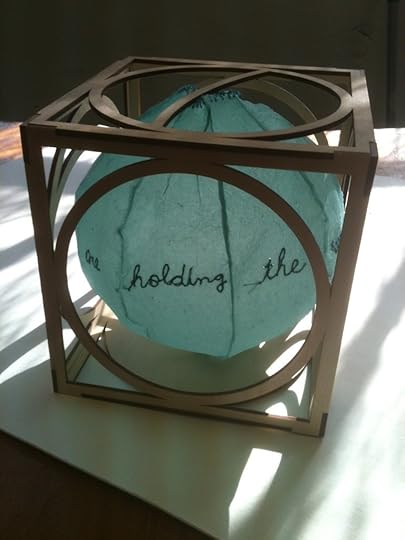
Global WarNing, inflatable paper ball with embroidered message in a laser cut box
In addition, I’ll have a few papers, some paper rings, paper bags and of course my how-to books and films.
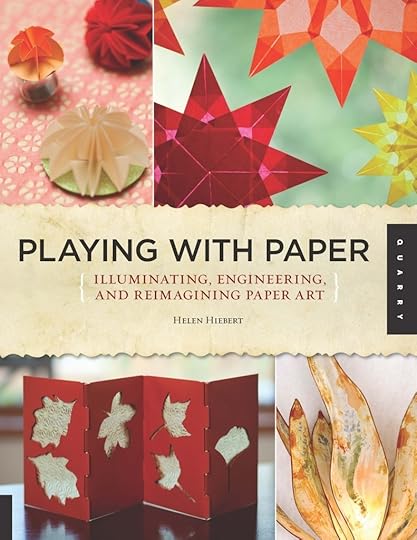

I hope to see some of you there, and I’ll send a short report from the fair next week!
February 3, 2013
The Papermaker’s Wet Floor
I guess I’ve been spoiled when it comes to worrying about water when making paper. Until my current studio that is. My last two studios were in garages with concrete floors that were graded, so the water conveniently flowed outside into nearby drains. When I moved into my current studio in November (located in Red Cliff, CO), it was carpeted. I removed the carpet, hoping there was concrete underneath, but alas, it is some sort of particle board.
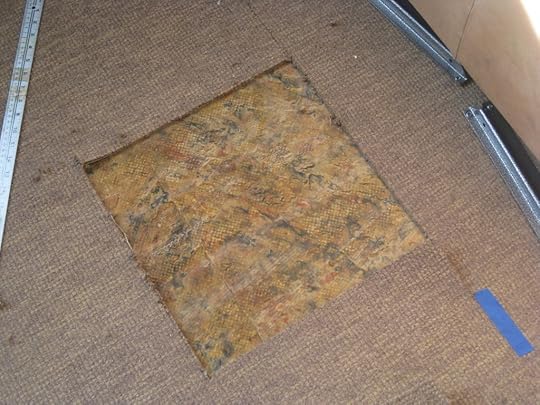
Removing the carpet.
After talking with several people about various options for impermeable flooring, I decided to paint over the wood, since this isn’t my permanent space. I put down three coats of porch paint.
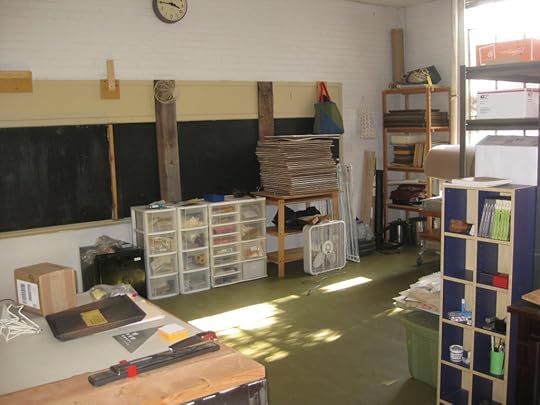
The painted floor.
It is holding up fairly well, but there is another issue: keeping as much water as possible from hitting the floor because cleaning it up is a pain!
My first task was to figure out how to get a hose onto the little sink (the studio is an old school room in a school house, so the sink is kid-size). After one long trip to Home Depot and two trips to Ace Hardware, I found what I needed – a series of adapters. I sealed the connection with some plumbers tape and was good to go.

The studio sink.
I have a nozzle on the other end, so I can take the water where I need it: to wet felts, clean buckets or fill vats with water. I’d like to put a splitter on the faucet so that I could have the hose and the sink, but the sink isn’t big enough to catch the water from the splitter (luckily, there is a utility sink in a nearby hallway).

I’ve had to adapt my vats slightly to prevent water from spilling onto the floor when I’m pulling sheets. I nest a smaller vat inside of a larger one and lay these “sticks” across the vat to hold the mould as each sheet of paper drains (don’t ask me why, but I haven’t managed to remember to get two matching pieces of wood when at the hardware store).

This sheet drainage method also means that the excess water drains back into the vat, which saves a bit of water.
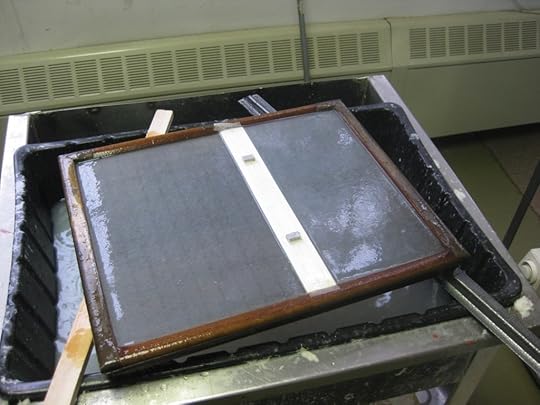
I found these boot trays, which collect water that drips from my couching stand.

And I move one of them underneath my press accompanied by two cement mixing tubs in the front and back which collect most of the press water.

Any excess water and inevitable spills get cleaned up with the wet vac.

I know there are a multitude of methods for keeping water in its place and for saving water. What are you techniques? Please share them as a comment below.
My DVD, The Papermaker’s Studio Guide, is a new resource featuring: how-to tips on setting up a professional papermaking studio; multiple ways to process pulp, form sheets, and utilize diverse pressing and drying techniques; and a range of unique papermaking techniques such as pulp painting, watermarking and working sculpturally with paper pulp.
Watch the trailer and order your copy today!
January 29, 2013
Paper Walls & Windows
The last time I saw wallpaper being applied was in the early 80′s when my mother was re-papering our bathroom. Wait, I take that back. I installed a commissioned wall piece in a condo in Portland a few years ago, and there was a guy installing designer wall paper in the bathroom there too! But I don’t encounter wallpaper very often.
When I was living in New York and working at Dieu Donné Papermill, we had a membership program which sponsored a series of field trips to various paper collections. A memorable one was a visit to the Cooper Hewitt Museum’s walllcoverings department. Although there is nothing like seeing the real thing in person, they have quite a bit of their collection on-line. I love the colors in the piece below.

Border, 2010-31-240, 1929–30. 1929–30. Machine-printed on paper. Gift of Carolle Thibaut-Pomerantz. 2010-31-240.
As I’ve written before, the intrigue of Japanese shoji screens was my entree into papermaking over twenty years ago. I was living in NYC and visited Japan before I discovered Dieu Donné. My original intention was to go to Japan and learn how to make paper. I started taking Japanese and researching ways to fund my trip. During this time, I visited a great little shop (in NYC) that made custom shoji screens called Miya Shoji, and met the owner, Chosuke Miyahira. I just looked him up and he’s still in business! Check out the lovely images of the traditional tools and projects they’ve done over the years.
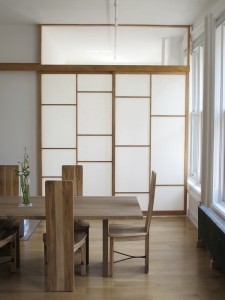
Shoji by Miya Shoji in NYC
I was inspired to make my own shoji screens and my own paper. I purchased this book and took a class to learn how to make wood joints. I even called the author of the book who had studied in Japan.
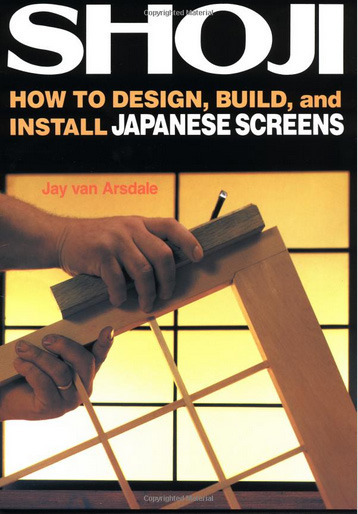
Shoji, by Jay Van Arsdale
I never ended up going to Japan, but I did make a nice set of sliding shoji screen door/windows that went from the base of my loft bed to the ceiling. Sadly, I no longer have photos.
In the fall of 2011, I had the opportunity to travel to Korea, where I saw some gorgeous Korean paper walls and windows.

papered windows at my Seoul homestay

Traditional paper doors at the paper museum in Seoul

Papered temple windows in Seoul
Check out these amazing bagasse paper tiles intended for wall coverings.

Bagasse wall tiles available from The Foundary
They come in several textures. I worked with bagasse years ago and it was very fibrous. I’m not sure how they are fabricating these tiles. Perhaps they are mixing the bagasse with another fiber.
What paper walls or doors have you seen or created? Please leave a comment below.
January 22, 2013
Intern in the Studio!
I had the first intern in my Colorado studio last week. Daria Wilber (from Calhan, CO) contacted me in the fall after becoming interested in papermaking during a class at Arrowmont last summer with Jo Stealey. By the way, since relocating, I’ve also had queries from Latvia, Australia and North Carolina. It seems like there must be a need for this type of mentoring.

Daria in the studio
I started my career in hand papermaking as an intern at Dieu Donné Papermill back in 1992. I learned a lot from this type of hands-on experience. I learn best by seeing, doing and asking questions. When I worked at Dieu Donné, the number of hours I worked went towards studio days for me to make my own work.
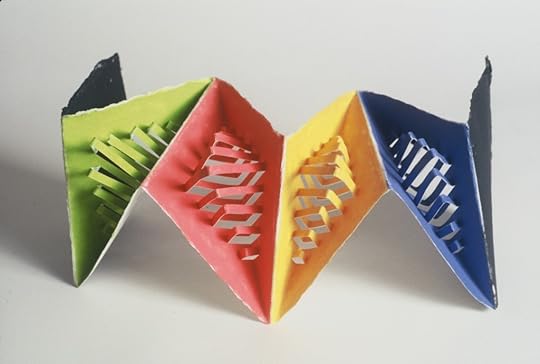
Uniform, a piece I made while interning at Dieu Donné Papermill
Since the year 2000, I’ve had twenty interns in my studio (19 in Portland, 1 in Colorado). My very first intern (Jenny Pinto) came all the way from India. She posted a note on the bookarts listserve with a subject line of “plant papermaking and lampshades”. A coincidence? I’d just written my first book, Papermaking With Plants, and was starting work on Paper Illuminated. Jenny spent 6 weeks with me that summer, and look what she is doing now. She brought some of her local banana fiber along, which is similar to abaca.

Chandelier by Jenny Pinto made from local banana fiber
The intern who spent the longest amount of time with me was was a student from Wellesley College. She came and worked with me full-time for 10 weeks one summer! In the end, she decided that papermaking was not her thing… I always explain that papermaking is 1/3 prep, 1/3 papermaking and 1/3 clean-up… and she witnessed that first-hand for 10 weeks!
Local interns (only about 1/3 of the interns I’ve had have been local) usually come in once a week for short or long periods or have joined me in the studio to help with particular projects. Interns from afar tend to come in for 20-30 hours a week for 2-4 weeks. Some receive college credit and others just want to witness the day-to-day life of an artist. My interns have ranged in age from 19 years to 58 years old (most have been under 30) and have come from all over the US, Canada and India.
Having an intern takes a certain amount of commitment on my part. I try to include each one of them in as many daily activities of the studio, take them with me to meetings, have them help with installations, etc. I also attempt to honor their wishes, if they want to learn a particular skill, have me give them feedback on their work, etc. But in all honesty, most of their time is spent assisting me in the studio.
It is my hope that they gain skills to equip them in their various pursuits in paper! Daria just sent me these lovely words about her experience here last week: “As a mentor, you were welcoming, patient, giving and flexible. I cannot thank you enough for that. My job as an intern was to help you as much as possible while learning from you, and I learned a great deal”. I do find the give and take of hosting interns rewarding.
Have you had interns or served as an intern? Tell us about your experience by leaving a comment below.
January 19, 2013
A Peak Inside of Playing With Paper
Playing With Paper is now in stores. Have you seen it in a shop near you? Here it is at Powell’s Bookstore in Portland (thanks to my friend Lisa for snapping this pic). I’d love to post pictures of the book in various locations, so send me a photo if you happen to see it!

Playing With Paper
I thought I’d share a few of the projects you can learn to make in the book. The gorgeous photography is by Stephen Funk.

This is the very first project I made for the book! My artist friend Shu-Ju Wang had recently travelled to Taiwan and she brought back this lovely turquoise blue paper. I crumpled it to give it a texture so that it looks more like cloth and then wove this beautiful hand marbled paper (made by Steve Pittelkow) into it. Marbling is an incredible art. In 2011, Steve taught a workshop at Penland in the studio next door to mine. I had the pleasure of watching him do a demo one day. It was fascinating to watch him distribute the color onto the water and then move the paper to create his patterned papers.

Steve Pittelkow’s marbled table runner
Steve purchased a copy of the book from me and tried his hand at making his own table runner last month, featuring another incredible sheet of his own marbled paper.

Window Star
My children went to a Waldorf charter school in Portland, where they learned to make these window stars. They are surprisingly easy to make, and the variations are endless. I used kite paper to make this one, but you can also use waxed paper or tissue paper.
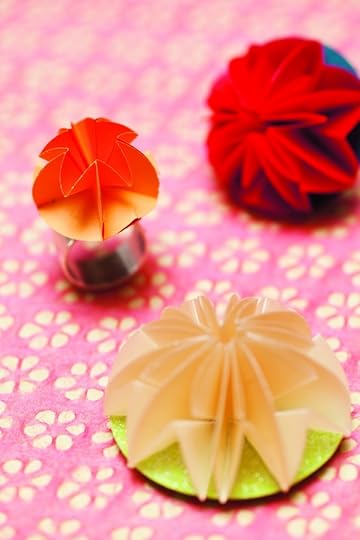
Paper Ring
I remember folding a bunch of paper circles at Haystack Mountain School a number of years ago – I saw a sample someone else had folded and was making a physical note (rather than a mental note, which would have gotten lost!) Those circles were in my drawer of book arts samples for years. I stumbled across them last spring, when I was writing the book, and somehow the idea for this ring was born. I found the metal ring blanks at Collage, a well-stocked art supply store in NE Portland and then I had another idea. I glued a magnet to the bottom of the paper disk, making the ring toppers interchangeable.

Magnetic Ring
I am making a dozen or so rings to sell at the Codex Book Fair in CA next month. If you can’t make it to the fair, but are interested in owning one of these, you can buy the book and make one yourself, or send me an e-mail and I’ll be happy to send you one (I’m thinking Valentines Day present).
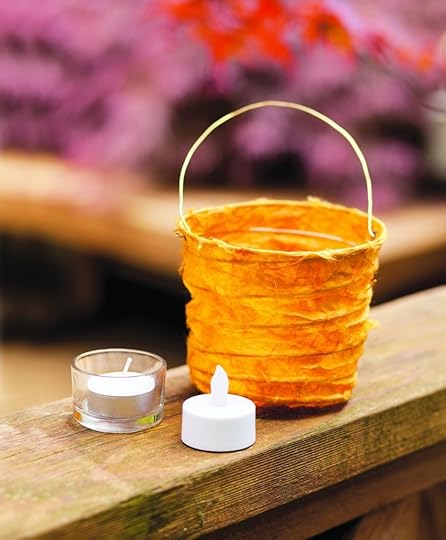
Collapsible Party Light
One of the fun things about writing a book (after not having written one for about 10 years) was that I got to sneak in some projects that I’d developed and taught since the last book (Paper Illuminated). I participated in a lantern festival which included an evening lantern walk to celebrate Portland’s brand new East Bank Esplanade eleven years ago (I remember this, because my daughter was a newborn). Leading up to the event we held several make-your-own-lantern workshops, and I developed this one, which is super simple. You just wrap a piece of reed around a yogurt container, collage paper over it and then slip the yogurt container out (of course, complete instructions can be found in Playing With Paper!).
 Okay, this is my last story for today. When I heard that Paul Johnson, pop-up artist extraordinaire, was coming to teach a workshop at OCAC last spring, I volunteered to host him in our home. We had a lovely time together, and I happened to be looking for one last project for the book. Paul generously developed this Pop-up Paper Castle, we scrounged up these papers, and he fabricated the project (including templates which are in the book) in a day in my studio.
Okay, this is my last story for today. When I heard that Paul Johnson, pop-up artist extraordinaire, was coming to teach a workshop at OCAC last spring, I volunteered to host him in our home. We had a lovely time together, and I happened to be looking for one last project for the book. Paul generously developed this Pop-up Paper Castle, we scrounged up these papers, and he fabricated the project (including templates which are in the book) in a day in my studio.
I’d love to hear about any projects that you make or are inspired to make after looking at Playing With Paper. Please share them with us by leaving a comment below. And if you’d like an autographed copy, just click here.
January 15, 2013
Artist Profile: Jill Powers
I’ve known the artist Jill Powers and have admired her work for several years, but lucky for me, I moved to her state (Colorado) and she came for a studio visit (my first!) when she was in the Vail Valley over the holidays. We had a lovely couple of hours chatting about artwork, life, and Jill’s show which just opened in Longmont.

Jill Powers
Plants & Insects in a Time of Change is on view at The Firehouse Art Center through February 3. I wish I could have attended the opening, which featured a live motion piece by the Contemplative Dance Collective.
Check out how the dancers were masked,

and how they interacted with Jill’s work.

Jill’s work looks at various issues surrounding insects and climate change, including one phenomenon here in Colorado: the tremendous devastation wrought by the pine-beetle epidemic in Colorado’s forests, an epidemic made more severe by drought and the insect’s increased reproductive cycle in response to climate change.
Jill has spent years honing her process of working with Japanese bark fibers, like kozo. When we were visiting, she pulled out a ziplock full of insect parts, and at first I thought they were real.
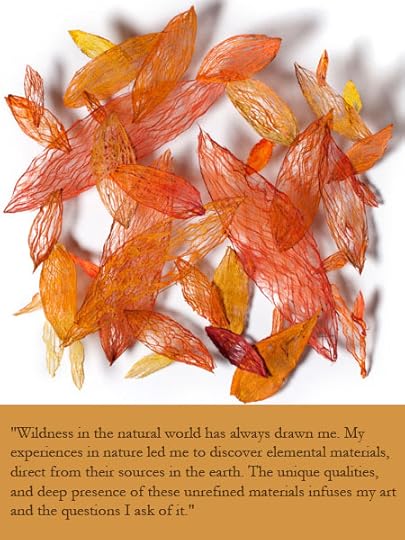
Jill will be giving an artist’s talk on Saturday, January 19th at 7pm in the gallery, when she will also be screening six short films – all about insects. It will be a mix of films about Colorado’s forests, the mountain pine bark beetles, and some films about interesting things contemporary artists are doing with insects.
I’m looking forward to visiting Jill’s studio in Boulder soon, where I’ll be amongst plants, tree pulps, seeds and other fruits of nature in some stage of being turned into art. I’ll write more about her work after I do.
January 8, 2013
My 10 Top Paper Picks
When I tell strangers what I do, it usually includes some sentiment about how small the field of paper art is. But even though it is small, I had no trouble coming up with this list of 10 of my favorite paper organizations. Here goes:
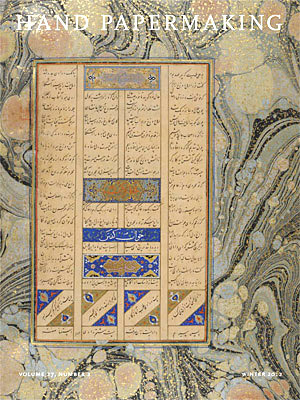
Current issue of Hand Papermaking Magazine
Hand Papermaking Magazine is a bi-annual publication, the journal in the field. In addition to publishing two magazines a year with actual paper samples in each issue, they publish a quarterly newsletter full of listings for national and international exhibitions, lectures, workshops, and more. Every two years, Hand Papermaking publishes a limited edition portfolio featuring a papermaking technique (fibers, watermarks, calligraphy, …) that includes samples by 20-30 paper artists. The most current portfolio is called Fiber Exposed!
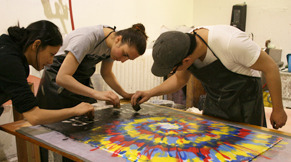
In the studio at Dieu Donné Papermill
Okay, I’m biased, because I’ve had the opportunity to work at some of these organizations: Dieu Donné Papermill is an amazing paper studio in NYC. Dieu Donné has a gallery, offers artists residencies, workshops, and internships, produceds collaborative, custom paper, and publishing projects. The mill also has a membership program and a subscription series.
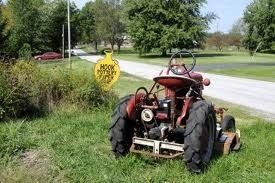
Hook Pottery Paper
I met my friend Andrea Peterson when I was working at Dieu Donné and registered with her husband Jon who made my wedding pottery. The two of them run Hook Pottery Paper in LaPorte, Indiana. He makes incredible wood-fired pots and she does wonders with paper. I’ll be teaching a workshop at their farm on August 3rd & 4th (details coming soon).

The Craft House at Penland
I first got into sculptural papermaking during a class with Jennifer Morrow at the Penland School in North Carolina. Every summer they offer a selection of classes in their indoor/outdoor papermaking studio. Penland is a magical place, with all sorts of studios, from weaving to glassblowing, book arts to woodworking and everything in between. I teach there every few years.
I have also taught at the Haystack Mountain School, a smaller version of Penland located in Deer Isle, Maine, where the summers are usually cool (and if not, you can jump into the ocean from the bottom of these steps). This coming summer, Matt Shlian, whose work is featured in Playing With Paper is teaching a workshop there.
The Friends of Dard Hunter is a national membership organization that has an annual meeting in a different city every October. Last year we convened in Cleveland, Ohio and this next fall we’ll meet in St. Louis. The organization originally formed to find a secure home for the huge collection of paper and artifacts collected by Dard Hunter. The collection is now housed at the Robert C. Williams American Museum of Papermaking (another amazing paper place).
IAPMA is the International Association of Hand Papermakers and Paper Artists (I’m currently serving as Vice President). This is also a membership organization that meets every two years in a different country. The next meeting will take place in Fabriano, Italy, home of the ancient papermill which has made Fabriano paper for centuries.
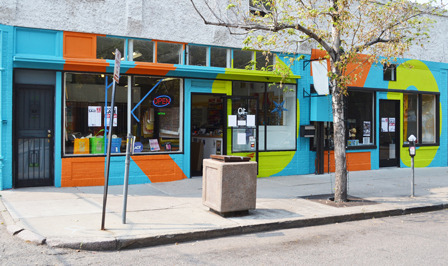
Kozo Fine Art Materials, Denver
Kozo Fine Art Materials in Denver has a nice selection of papers and the closest place for me to go shopping (a 2-hour drive)!
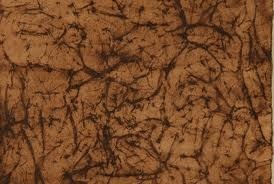
O’Malley Crackle Flax Paper
When you visit Cave Paper in Minneapolis, you go down to the basement of a city building and soon you feel like you are in a real cave. Amanda Degener and Bridget O’Malley are the proprietors, and they make a fine selection of durable handmade papers using flax as their primary raw material.
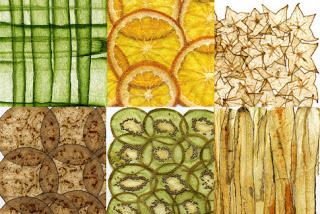
Veggie & Fruit Papyrus carried by Hiromi Paper
Hiromi Paper in Santa Monica, CA specializes in importing papers from Japan, but they also carry papers from other parts of the world. The company is devoted to the creation of a greater rapport between Japanese papermakers, printers, artists, conservators, designers and bookmakers, while developing new directions and a deeper understanding of Japanese papers or Washi.
I could go on, but I’ll stop with ten. What are your top paper picks? Please share them with us by leaving a comment below.
December 31, 2012
Happy New Year: A Paper Ball
While thinking about the ball dropping in Times Square, my mind went to … paper balls!
So here goes, 10 Paper Balls for the countdown to midnight. Happy New Year to One and All!
10. Check out these amazing woven paper spheres. There is even a pattern for making these!
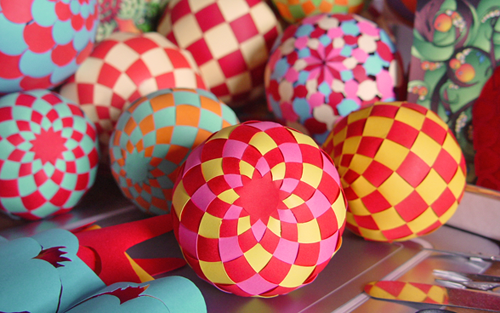
Sphere #001 by Papermatrix
9. Professor Yoshinobu Miyamoto has made some amazing paper spheres, among other things!
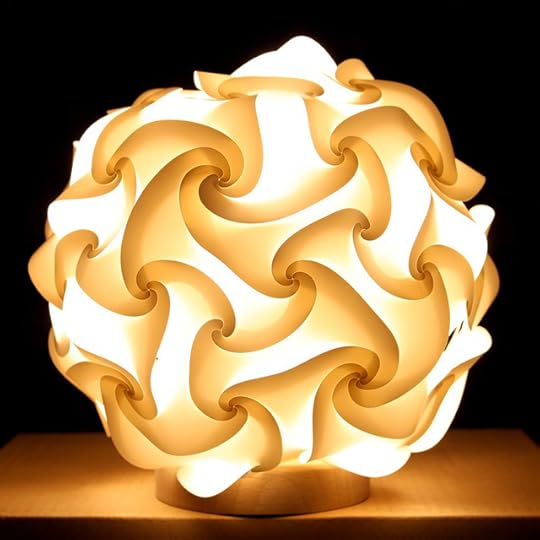
Paper constructions by Professor Yoshinobu, Miyamoto
8.

7. Carlos Molina makes wonders with paper, including these paper puzzle balls.
6. and these paper ornaments:
5. These paper pom poms are fun:
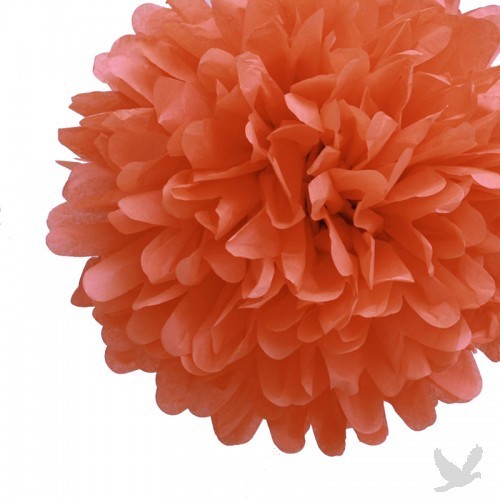
Paper pom pom
4. Another whimsical party decoration: paper fans (I love how these collapse to ship flat).
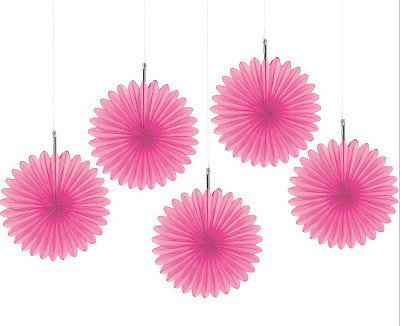
Bright Pink Hanging Fans
3. This guy is cool: Nick Sayers has made spherical sculptures, shelters and lighting!
2. Check out this paper cup pendant! Its a DIY project too.

Paper Cup Light Shade
1. And the grand finale. You’ll have to click on this link – I couldn’t figure out how to copy the video onto the blog. Hint, hint, it’s origamic architecture.
Happy 2013!
December 25, 2012
1: A Christmas Giveaway!
Merry Christmas one and all! Regardless of your holiday tradition or religious persuasion, I am happy to be connected to you through our shared love of paper! Thanks to all of you who have sent loving notes about this blog. I really appreciate the encouragement!
I’m initiating a giveaway today, but you have until midnight on December 31st to join in the fun! One lucky blog reader will win:
- a copy of Playing With Paper
- an assortment of papers used to create the projects in the book
- a selection of my own handmade sheets.
Here is how to play:
1. Leave your answer in the comments below to the question: where do you shop for paper? (I’m hoping to assemble a list of paper stores around the country, so feel free to list a few).
2. Share your favorite paper store on my Facebook page (remember in order for my Facebook updates to show in your newsfeed, you need to hover over the “LIKED” button on our page and select “Show in News Feed”).
3. Subscribe to this Blog in the upper right-hand corner.
4. Join my mailing list to receive updates about where I’m traveling and teaching, paper-related events around the country, and more.
Enter by Midnight MST Monday, December 31st. Open to U.S. and Canadian residents only.
I will randomly pick a winner on Tuesday, January 1, 2013, so check your email!
___________________________________________________________________
This is the last day of the 25 Days of Paper (for this year, at least): I’ve been a crazy blogger in December, featuring cool paper products, projects, blogs, books, or papers each day. I’ve also posted links on my FaceBook page. From now on, I’ll keep blogging weekly (instead of daily), so stay tuned!
Wishing each and every one of you a lovely day!




